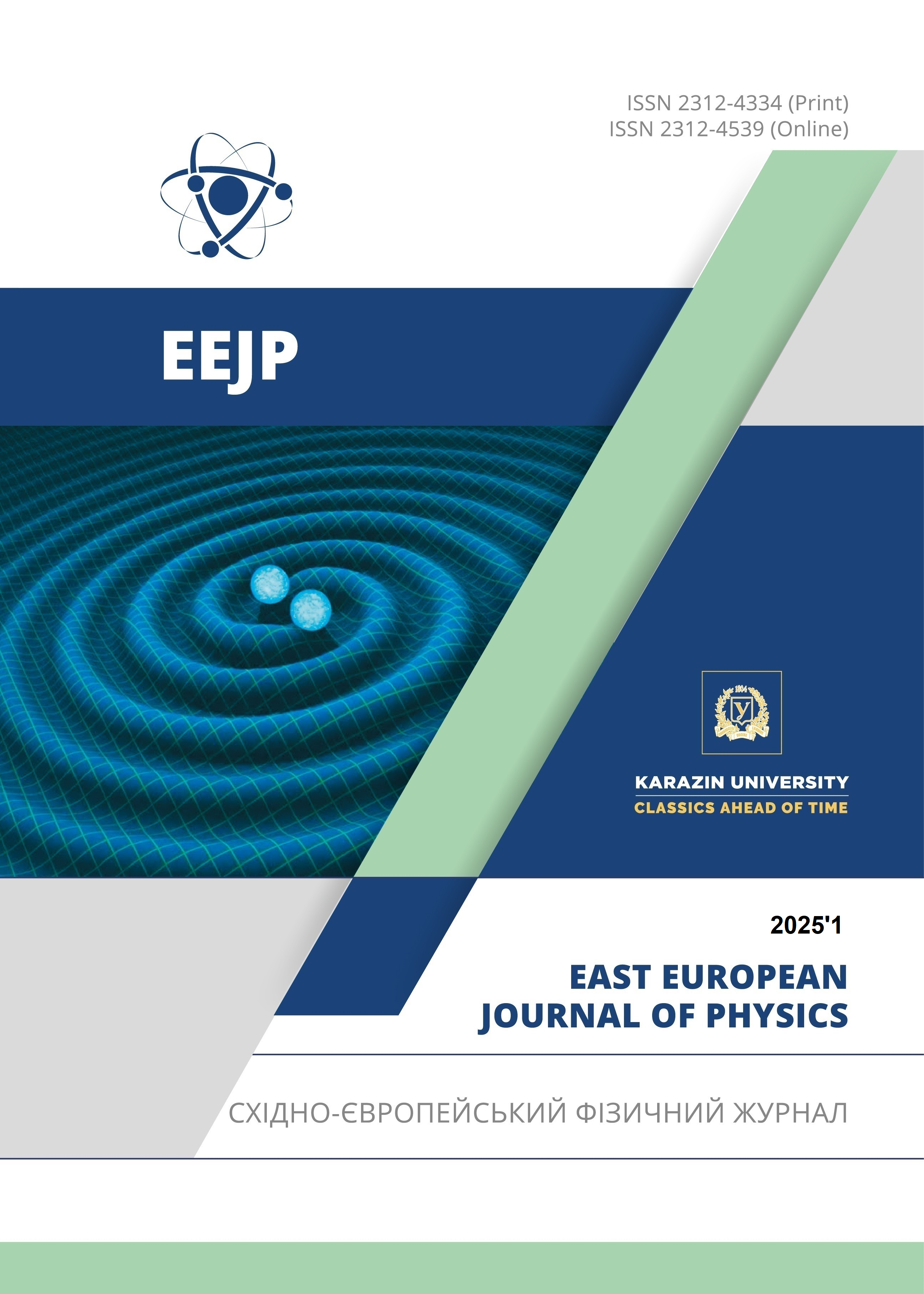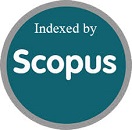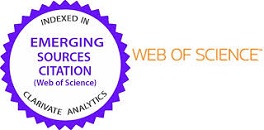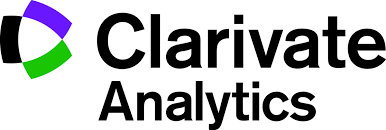Аналіз кровотоку через нахилену артерію, яка має численний стеноз зі змінною в’язкістю нанорідини з використанням одностінної вуглецевої нанотрубки (SWCNT)
Анотація
Під впливом одностінної вуглецевої нанотрубки (ОСВНТ) досліджено стійкий потік потоку в’язкої рідини через похилу трубу неоднорідного поперечного перерізу з множинними стенозами. Ми лінеаризували рівняння течії та визначили вирази опору течії та напруги зсуву стінки, припускаючи легкі стенози. Дослідження показали, як параметри впливають на змінні потоку. Встановлено, що опір потоку зростає з висотою стенозу. Також цікаво відзначити, що напруга зсуву стінки зменшується зі збільшенням ступеня стенозу. Також спостерігається, що опір потоку (λ-) збільшується з нахилом (α), параметром джерела та стоку (β), числом Грасгофа (Br), динамічною в’язкістю (μ) і потоком (q). Профілі швидкостей представлені у вигляді ліній струму.
Завантаження
Посилання
D.F. Young, “Effects of time-dependent stenosis on °ow through a tube,” J. Engrg. Ind. Trans. ASME, 90, 248-254 (1968). https://doi.org/10.1115/1.3604621
J.S. Lee, and Y.C. Fung, “Flow in Locally-Constricted Tubes and Low Reynolds Numbers,” J. Appl. Mech., Trans. ASME, 37, 9-16 (1970). https://doi.org/10.1115/1.3408496
J.B. Shukla, R.S. Parihar, and B.R.P. Rao, “Effects of stenosis on non-Newtonian flow through an artery with mild stenosis,” Bull. Math. Biol. 42, 283-294 (1980). https://doi.org/10.1007/BF02460787
G. Radhakrishnamacharya, and P.S. Rao, “Flow of magnetic fluid through a non-uniform wavy tube,” in: Proc. Nat. Acad. Sci. India, 76(A), III 86, (2007).
G.-T. Liu, X.-J. Wang, B.-Q. Ai, and L.-G. Liu, “Numerical Study of Pulsating Flow Through a Tapered Artery with Stenosis,” Chinese Journal of Physics, 42(4), 401–409 (2004).
K.M. Prasad, P.R. Yasa, and J.C. Misra, “Characteristics of Blood Flow Through a Porous Tapered Artery Having Mild Stenoses under the Influence of an External Magnetic Field,” Journal of Applied Science and Engineering, 24(4), 661-671 (2021). https://doi.org/10.6180/jase.202108_24(4).0022
D.J. Schneck, and S. Ostrach, “Pulsatile blood flow in a channel of small exponential Divergence-I. The linear approximation for low mean Reynolds number,” J. Fluids Eng. 16, 353-360 (1975). https://doi.org/10.1115/1.3447314
K.M. Prasad, and G. Radhakrishnamacharya, “Flow of Herschel-Bulkley fluid through an inclined tube of non-uniform cross-section with multiple stenoses,” In. Arch. Mech. 60(2), (2008). https://am.ippt.pan.pl/am/article/view/v60p161/pdf
S.U.S. Choi, “Enhancing thermal conductivity of fluids with nanoparticles,” in: Developments and applications of non-Newtonian flows, edited by D.A. Signer, and H.P. Wang (ASME, NY, 1995), pp. 99-105.
N.S. Akbar, and S. Nadeem, “Peristaltic flow of a micro-polar fluid with nanoparticles in the small intestine,” Applied Nanoscience, 3(6), 461–468 (2012). https://doi.org/10.1007/s13204-012-0160-2
K.M. Prasad, P.R. Yasa, and R. Motahar, “Thermal effects of two immiscible fluids in a stenosed tube with nanoparticles in the core region,” International Journal of Ambient Energy, 43(1), 6651-6661 (2022). https://doi.org/10.1080/01430750.2022.2037457
S. Nadeem, and S. Ijaz, “Theoretical analysis of metallic nanoparticles on blood flow through stenosed artery with permeable walls,” Physics Letters A, 379(6), 542-554 (2015). https://doi.org/10.1016/j.physleta.2014.12.013
A.M. Abd-Alla, E.N. Thabet, and F.S. Bayones, “Numerical solution for MHD peristaltic transport in an inclined Nano fluid symmetric channel with porous medium,” Sci. Rep. 12(1), 1–11 (2022). https://doi.org/10.1038/s41598-022-07193-5
J. He, N.S. Elgazery, K. Elagamy, and A.N.Y. Elazem, “Efficacy of a modulated viscosity-dependent temperature/nanoparticles concentration parameter on a nonlinear radiative electromagnetic-Nano fluid flow along an elongated stretching sheet,” J. Appl. Comput. Mech. 9(3), 848–860 (2023). https://doi.org/10.22055/jacm.2023.42294.3905
J.-H. He, L. Verma, B. Pandit, A.K. Verma, R.P. Agarwal, “A new Taylor series-based numerical method: simple, reliable, and promising,” J. Appl. Comput. Mech. 9(4), 1122-1134 (2023). https://doi.org/10.22055/jacm.2023.43228.4040
S.M.S. Murshed, C.A.N. Castro, M.J.V. Lourenco, M.L.M. Lopes, and F.J.V. Santos, “A review of boiling and convective heat transfer with nanofluids,” Renew. Sustain. Energ. Rev. 15, 2342-2354 (2011). https://doi.org/10.1016/j.rser.2011.02.016
S. Iijima, and T. Ichihashi, “Single-shell carbon nanotubes of 1-nm diameter,” Nature, 363, 603-605 (1993). https://doi.org/10.1038/363603a0
N.S. Akbar, and A.W. Butt, “Carbon nanotubes analysis for the peristaltic flow in curved channel with heat transfer,” Applied mathematics and computation, 259, 231-241 (2015). https://doi.org/10.1016/j.amc.2015.02.052
N.S. Akbar, “Entropy generation analysis for a CNT suspension nanofluid in plumb ducts with peristalsis,” Entropy, 17, 1411 1424 (2015). https://doi.org/10.3390/e17031411
N. Turaeva, Y. Kima, and I. Kuljanishvili, “An extended model for chirality selection in single walled carbon nanotubes,” Nanoscale Adv. 5, 3684-3690 (2023). https://doi.org/10.1039/d3na00192j
A. Majeed, et. al., “Thermally developed radiated flow of single and multiple carbon nanotubes (SWCNTs-MWCNTs) with variable thermal conductivity,” Journal of Radiation and Applied Sciences, 18(1), (2025). https://doi.org/10.1016/j.jrras.2024.101244
Y. Wang, et al., “Thermal outcomes for blood-based carbon nanotubes (SWCNT and MWCNTs) with Newtonian heating by using new Prabhakar fractional derivative simulations,” Case studies in Thermal Engineering, 32, (2022). https://doi.org/10.1016/j.csite.2022.101904
M. Prasad, and Sreekala, “Thermal Effects on Peristaltic Transport in an Inclined Circular Elastic Tube,” Eur. Chem. Bull, 12(Special Issue 1), 510-520 (2023). https://doi.org/10.31838/ecb/2023.12.sa1.048
Авторське право (c) 2025 Syed Nisar Ahmed, Karanamu Maruthi Prasad, R. Sridevi

Цю роботу ліцензовано за Міжнародня ліцензія Creative Commons Attribution 4.0.
Автори, які публікуються у цьому журналі, погоджуються з наступними умовами:
- Автори залишають за собою право на авторство своєї роботи та передають журналу право першої публікації цієї роботи на умовах ліцензії Creative Commons Attribution License, котра дозволяє іншим особам вільно розповсюджувати опубліковану роботу з обов'язковим посиланням на авторів оригінальної роботи та першу публікацію роботи у цьому журналі.
- Автори мають право укладати самостійні додаткові угоди щодо неексклюзивного розповсюдження роботи у тому вигляді, в якому вона була опублікована цим журналом (наприклад, розміщувати роботу в електронному сховищі установи або публікувати у складі монографії), за умови збереження посилання на першу публікацію роботи у цьому журналі.
- Політика журналу дозволяє і заохочує розміщення авторами в мережі Інтернет (наприклад, у сховищах установ або на особистих веб-сайтах) рукопису роботи, як до подання цього рукопису до редакції, так і під час його редакційного опрацювання, оскільки це сприяє виникненню продуктивної наукової дискусії та позитивно позначається на оперативності та динаміці цитування опублікованої роботи (див. The Effect of Open Access).








